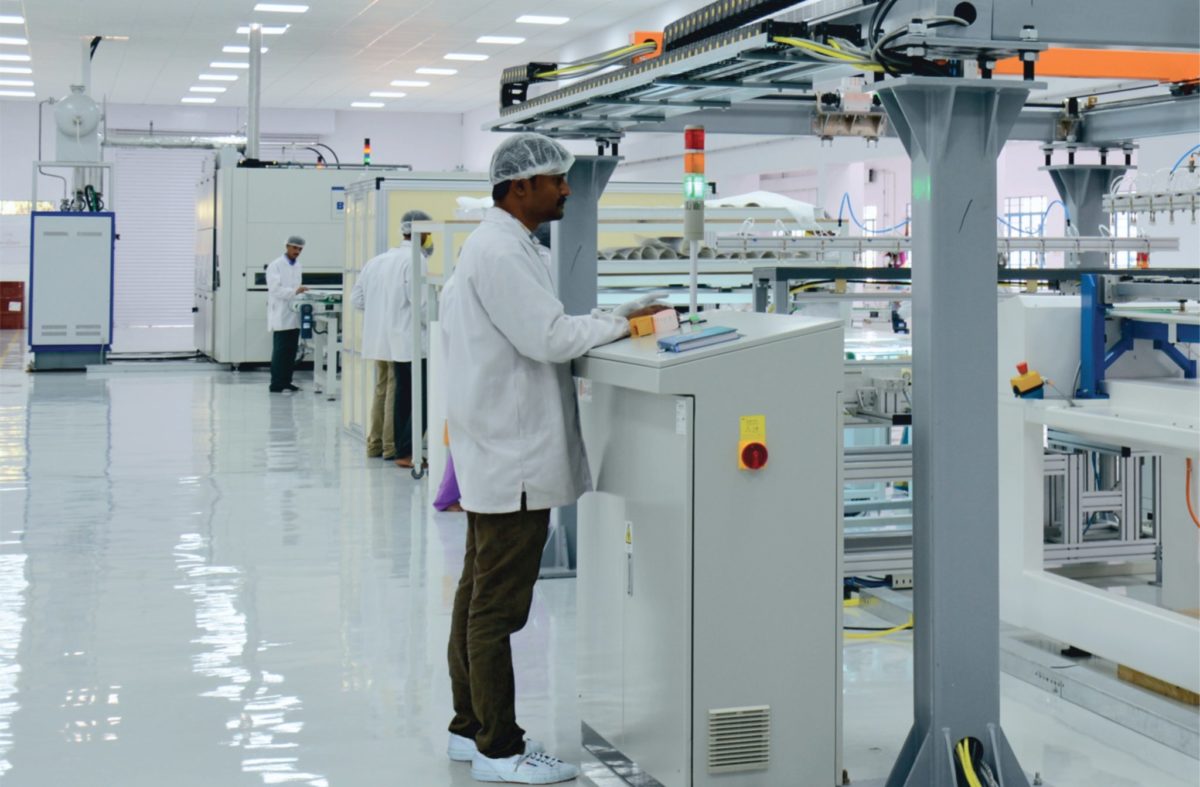The much-delayed manufacturing-linked solar tender by Solar Energy Corp. of India (SECI) has finally succeeded in attracting bidders. In fact, The Hindu Business Line has reported that three developers have now come forward, with the end result being that the much-criticized exercise has ended up oversubscribed – at least in terms of the capacity on offer.
The newspaper reported that Adani Green Energy has placed bids for 4 GW of capacity in return for agreeing to establish new manufacturing facilities with an annual production capacity of 1 GW. The Business Line also recently reported that Azure Power – the only developer to consistently demonstrate interest in the exercise – has pitched 500 MW of new manufacturing capacity in a bid to secure 2 GW of solar project concessions. Newcomer Navyug Power, meanwhile, has offered an identical bid.
The four-to-one ratio of manufacturing-to-project capacity indicates that all three bidders are focusing their manufacturing offer on producing cells and/or modules as that is the ratio applied to those sorts of production fabs under the last change to the terms of the tender, made last month.
Solar ingot and wafer production lines would secure only three times as much project capacity as manufacturing commitments under the tender, which is currently designed to secure 2 GW of manufacturing capacity by offering 7 GW of projects. Under the terms of the exercise, the manufacturing bids accepted will be for 500 MW of each of ingots, wafers, cells and module capacity.
If the newspaper report is accurate, SECI would appear to have the choice of amending the tender yet again or allocating just half the cell and/or module manufacturing capacity desired and failing to secure any new ingot and wafer making operations.
The troubled procurement exercise was launched in May 2018 to secure 5 GW of solar manufacturing facilities by offering 10 GW of project capacity on a two-for-one basis. But SECI’s “world’s largest solar tender” was met with little enthusiasm and was subsequently scaled back to 3 GW of manufacturing for 10 GW of project capacity.
The deadline was extended and eventually attracted only one bidder, Azure Power, which eventually offered 600 MW of manufacturing commitments in return for 2 GW of generation capacity. SECI initially showed a willingness to bend the rules, but the government rejected Azure Power’s suggested solar electricity tariff. By that stage, the original PPA tariff cap had been raised to INR 2.85 ($0.04)/kWh.
The exercise was scaled back again in January to 1.5 GW of manufacturing facilities linked to 3 GW of project capacity. By June, following another four extensions to the bidding deadline, the figure had risen to 2 GW of production lines and 6 GW of solar capacity. A further 1 GW of project capacity was added last month, along with the stipulation that the manufacturing element must be divided equally into blocks of ingot, wafer, cell and module fabs.
It is that latter iteration, which included a raised tariff cap of INR 2.93/kWh, that now appears to have stirred some interest among developers.
The establishment of a solar manufacturing value chain is crucial for India as it chases a goal of 100 GW of solar generation capacity by 2022, and of eventually supplying 40% of Indian electricity from clean energy sources. According to The Energy and Resources Institute, India imports almost 85% of the 10 GW of solar equipment it deploys annually, despite possessing almost 11 GW of domestic solar module production capacity and around 3 GW of cell output.
This content is protected by copyright and may not be reused. If you want to cooperate with us and would like to reuse some of our content, please contact: editors@pv-magazine.com.




By submitting this form you agree to pv magazine using your data for the purposes of publishing your comment.
Your personal data will only be disclosed or otherwise transmitted to third parties for the purposes of spam filtering or if this is necessary for technical maintenance of the website. Any other transfer to third parties will not take place unless this is justified on the basis of applicable data protection regulations or if pv magazine is legally obliged to do so.
You may revoke this consent at any time with effect for the future, in which case your personal data will be deleted immediately. Otherwise, your data will be deleted if pv magazine has processed your request or the purpose of data storage is fulfilled.
Further information on data privacy can be found in our Data Protection Policy.